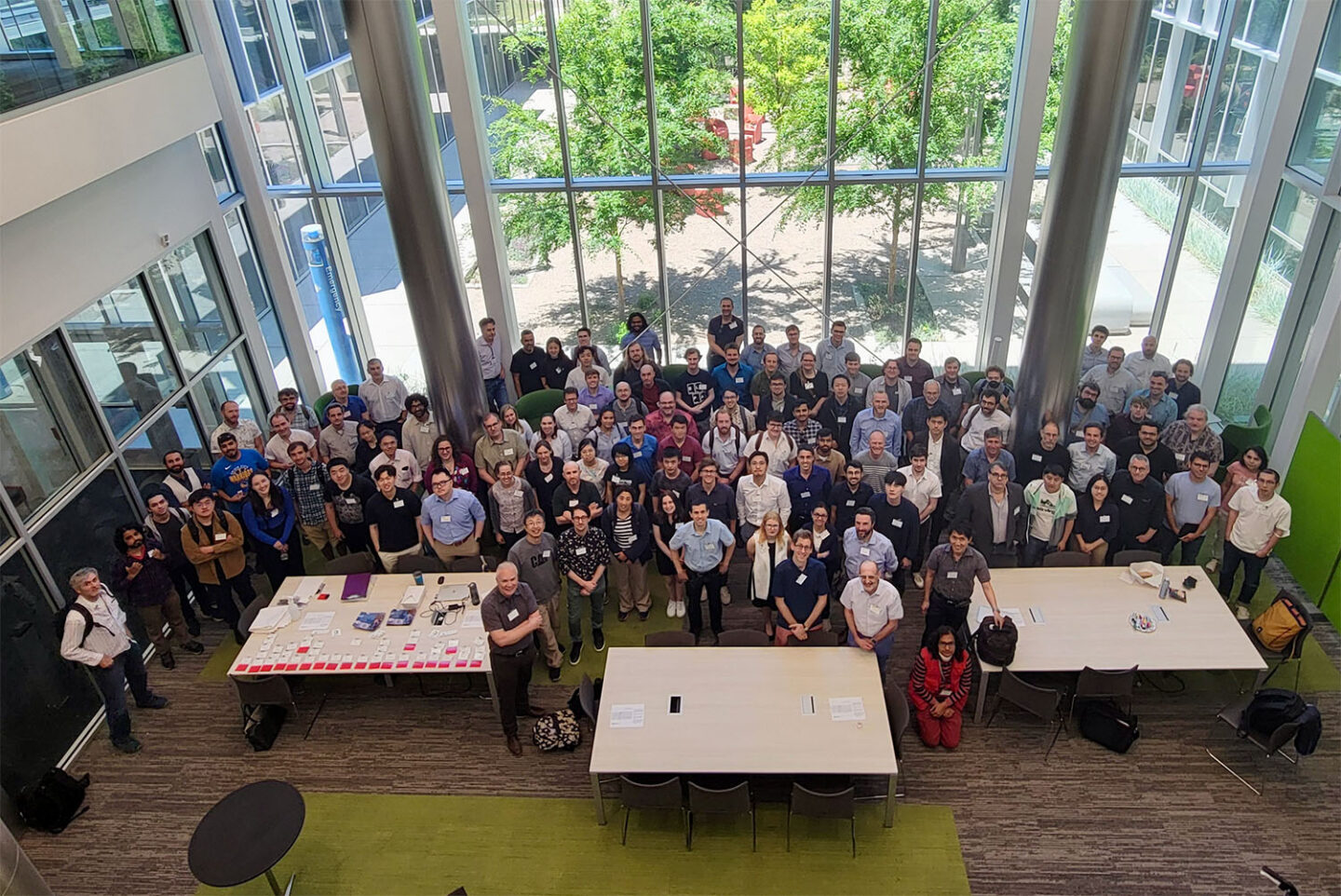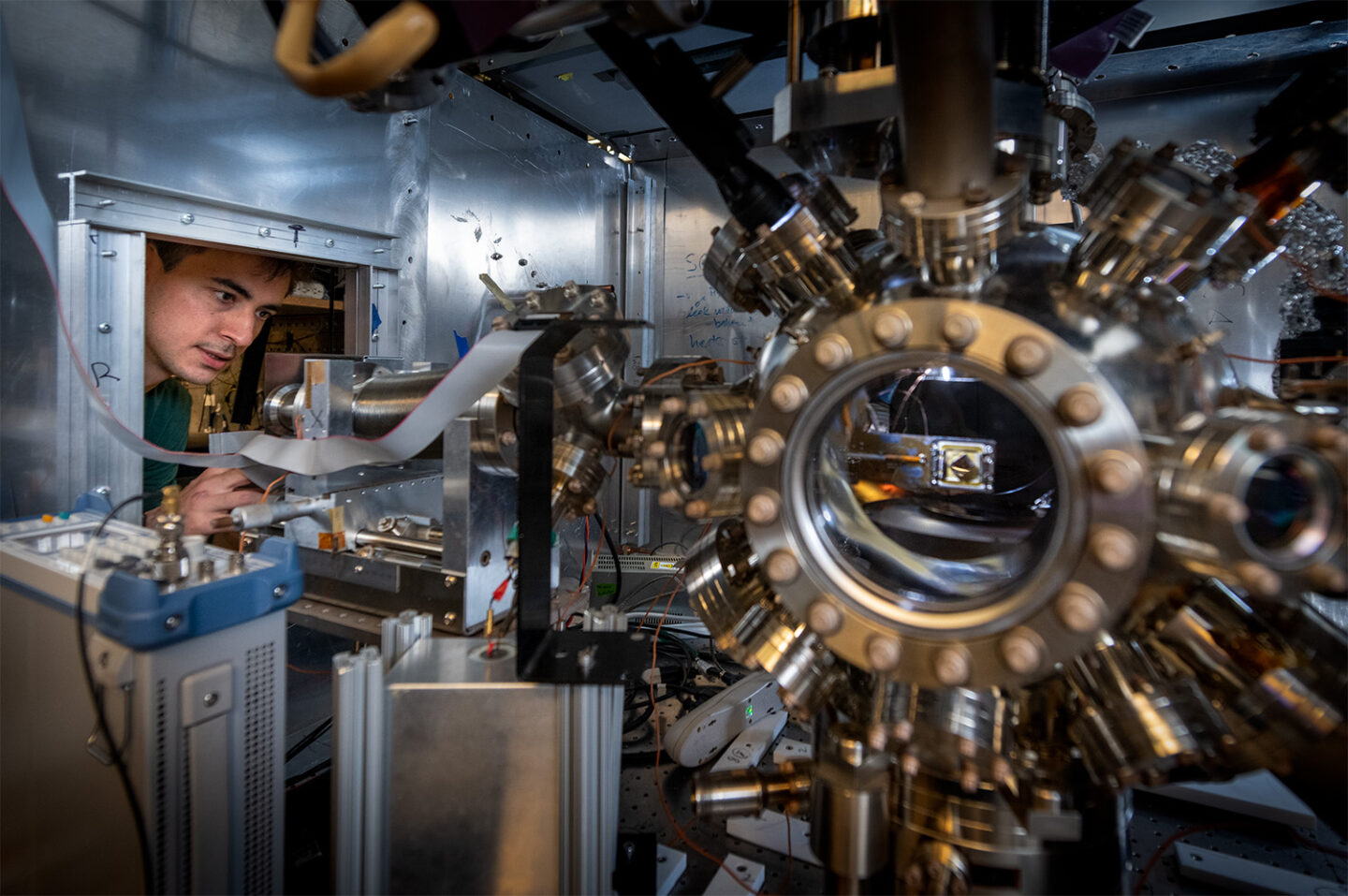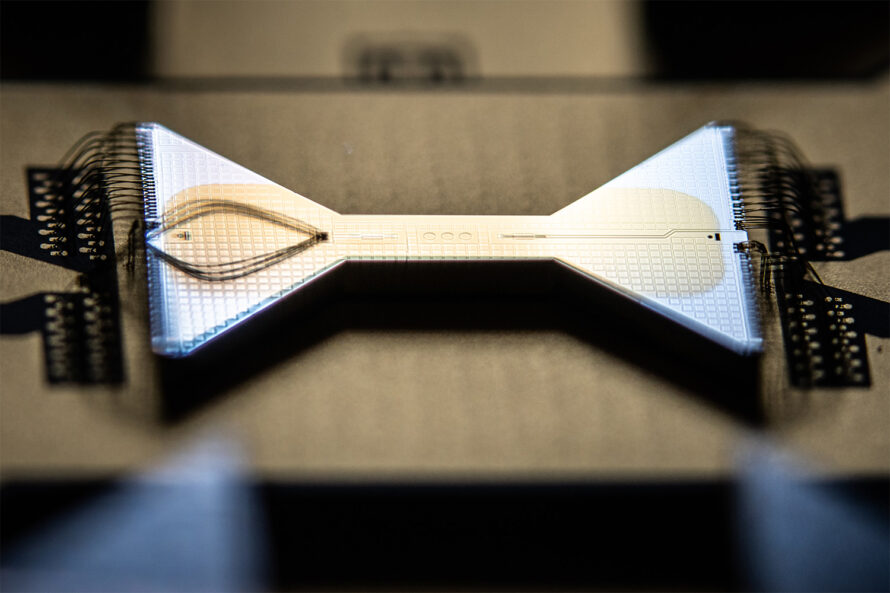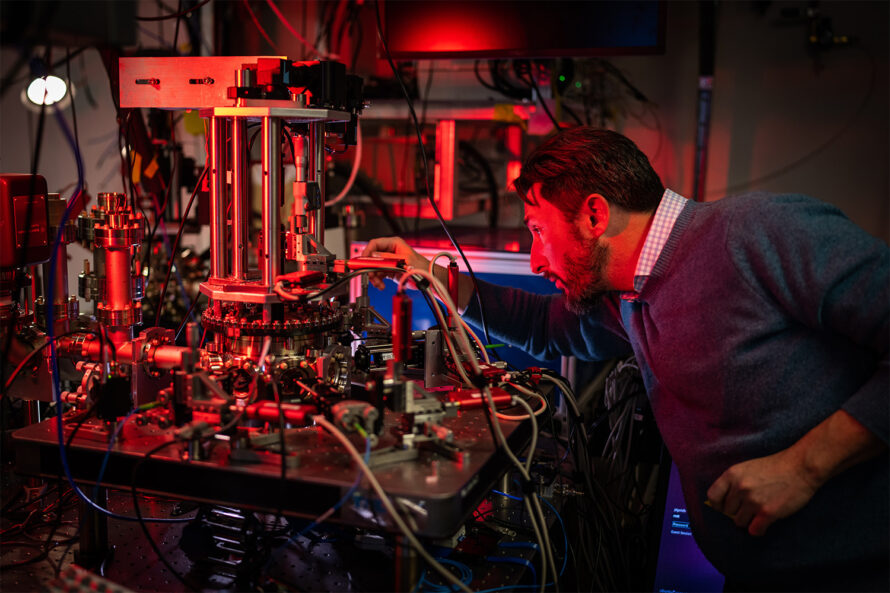Quantum technologies may still be in development, but these systems are evolving rapidly and existing prototypes are already making a big impact on science and industry. One of the major hubs of quantum R&D is the Quantum Systems Accelerator (QSA), led by Lawrence Berkeley National Laboratory (Berkeley Lab). QSA is one of five National Quantum Information (NQI) Science Research Centers funded by the U.S. Department of Energy (DOE) to develop technologies that can solve longstanding challenges in physics, chemistry, materials, and biology that can't be addressed with classical computers.
QSA brings together 15 member institutions in North America, including Sandia National Laboratories as lead partner. By collaborating on all aspects of quantum technology, the center is helping shift the field from theories to real-world tools.
We spoke to QSA Director Bert de Jong to learn more about QSA's progress in the past four years, exciting plans for the future, and what kind of breakthroughs might await as quantum systems grow and mature.

Q. How is QSA getting us closer to scalable, more efficient quantum computers that are less error-prone?
de Jong: We are doing research that advances quantum computing technologies and we do it in a very unique way. We work on three of the most advanced qubit technologies: trapped ions, neutral atoms, and superconducting qubits. We are the only DOE National Quantum Initiative (NQI) center that pursues atom-based technologies. As a center, we focus on co-design of quantum technologies with control systems, algorithms, and end user applications. And we are not just advancing the technology to get more qubits and bigger quantum computers. We're also trying to improve the qubits themselves - the fundamental computational component of a quantum computer. We're doing this by designing better materials for the qubits, more accurate controls, and more accurate measurements. There are many sources of "noise" that muddy the functioning of the system and make quantum computers very error prone right now. And finding ways to address them is hard because nature is noisy!
"We want to advance quantum computers that are better suited to solve the scientific problems that are key to the Department of Energy's mission."
- Bert de Jong
We also develop the algorithms that actually run on these quantum computers and study how they run with increasing qubit count. Again, all of this is done in a co-design fashion. So, researchers investigating all these different components of quantum systems work together in QSA. We want to advance quantum computers that are better suited to solve the scientific problems that are key to the Department of Energy's mission.

Q. How has QSA already led to new scientific discoveries or new approaches to doing research?
de Jong: We have really advanced technology, and I'll give you a couple of examples of how we're using it now to do real science. For neutral atoms, we've reached quantum simulators that are the size of 250 atoms, which is 250 qubits - that's really large. That team, led by Harvard University, is not just able to control 250 atoms in the right way, they're also able to do scientific simulations with them in a very accurate way. Now, once you get to 250 qubits, you can actually look at a lot of interesting problems.
We have also done some modeling of what scientists call "many-body systems," which include materials that have a very complicated quantum behavior. Understanding these materials is critical to developing next-generation batteries, catalysts, and solar cells. By simulating these systems, we can start to observe behaviors of superconducting materials, and measure multiple phases of matter, which is something that is not trivial to do in a real experimental setting or to compute on classical computers.
The neutral atoms can also be used as quantum sensors. Our team at JILA recently used neutral atoms to make very accurate measurements of the gravitational redshift in a very small volume atomic sample. This is unique, it's a new way of sensing for fundamental physics questions. Beyond that, people are starting to use the atoms for quantum simulations of particle physics and high energy physics models that are going to become difficult to do on classical computers.
For trapped ion-based quantum computers, our partner Sandia developed the first system that can potentially hold 200 ions, which they have shipped to Duke University to integrate into their system. The next stage is exploring how to control the ions at that scale, and then we can start to do simulations and science with the system.
Using neutral atoms devices, Harvard has been looking at simulating open quantum systems. That's important, because nature is an open quantum system. Everything is noisy outside of the closed systems we create. Understanding and modeling those real, noisy physical systems - like a molecule or material that is interacting with light or electromagnetic fields - are critical for better control over the chemical processes and materials that are relevant for a lot of science applications.
Teams in QSA have also done similar work with superconducting qubits. The team at Berkeley Lab is designing and fabricating new types of qubits, called grid qubits, that are much less prone to noise. The team led by MIT and MIT Lincoln Laboratory is focused on scaling superconducting systems, and recently used advanced superconducting devices to explore how entanglement works in complex quantum systems.


Q. What about overlap with other fields? Tell me about your field of applying quantum computers to chemistry.
de Jong: Chemistry has long been touted as one of the early domains to take advantage of quantum computers. But it's not easy to run chemistry calculations on a quantum computer. That's why we have theorists and experimentalists working together to design chemistry simulations that get the most out of quantum computers. Let me give you one example of a recent chemistry experiment. The QSA team at Duke used their trapped ion quantum computer to actually simulate a nuclear magnetic resonance (NMR) experiment of a molecule, which is actually funny because an NMR experiment is effectively a quantum experiment too. If you wonder what NMR is, it is pretty similar to an MRI machine in a hospital. So, using a quantum computer to model a quantum system is a logical way to do it. This is what Richard Feynman really envisioned for quantum computers - modeling quantum systems.
Q. How are Centers like QSA working with industry and the wider research community to share advances, collaborate, and grow the field as a whole?
de Jong: We have a lot of other connections with industry because multiple technological advances and engineering advances that are being made either here or at Sandia or at MIT Lincoln Laboratory or any of our other partners get interest from a range of companies.
One notable example of helping the field is the work at Berkeley Lab advancing QubiC, an open-source FPGA-based quantum bit control system. This system is being adopted by academic institutions, among others.
And it goes in two ways actually. QSA is actually supporting tech transfer on QSA research and inventions into industry as well as supporting the creation of companies. I mentioned our advances in neutral atoms; most of that work was done at Harvard. QuEra is a company built on the pioneering research at Harvard. So, a lot of the QSA technology has now shown up in a commercial offering by QuEra, and there is a continued research partnership. MIT, another QSA member, has been working on superconducting qubits, and they just started a spinoff company called Atlantic Quantum. We also work with industry, such as IonQ, a company that commercializes trapped ion quantum computers for basic research that is used by other commercial entities like Microsoft, NVIDIA, and General Electric. They have a long history of getting trapped ion systems from Sandia.

Q. Data encryption is talked about a lot as a commercial application for quantum systems, but what are some other uses that people are hoping to bring to fruition soon?
de Jong: In the next couple of years, we should be able to start to do simulations of materials in a way that really helps industry develop better energy technologies like I mentioned earlier and potentially better materials for classical computing. I also think a lot of companies are definitely gunning for applications in life science, where there are a lot of potential applications, like drug discovery for example. But that's a longer way out.
Quantum computers are also very good at optimization. Think of the electric grid, managing airplane traffic, road traffic, financial transactions, or anything that operates as a complex network of systems - that is something that is very complicated to optimize and classical computers have a hard time with it.
So, there are many areas that could benefit from quantum computing and sensing as well as quantum networking, which is the very nascent field of creating powerful networks of quantum computers like we have networks of classical computers. Those three technologies have the potential to really make a step change in how our society and economy operates. Are we there yet? No. But that's why I would say almost every Fortune 500 company has at least a couple of people looking at how quantum can help them.
Q. One of the huge draws of quantum computers is the potential to solve problems that are intractable with current computing technologies. What are some examples of new types of research that you are excited about?
de Jong: Oh, so many. I'm a computational chemist by training, I do quantum research, but I also enjoy working with experimentalists solving real-world chemistry problems. One of the things I'm working on is how can we develop better materials to capture carbon from the air. The calculations that go into simulating materials for this purpose are very expensive. We would need access to exascale computers for pretty much months at a time, here at Berkeley Lab's National Energy Research Computing Center or at Oak Ridge National Laboratory. Even with exascale computers, we greatly simplify the model of the reactions so we can run it on such a classical computer.
Our hope is that we won't have to reduce our models. We can actually start running full models of reactions we're interested in on a quantum computer. This comes with the additional benefit of saving a lot of power, as classical supercomputers require a great deal of energy to operate.
There are a lot of other fields with similar challenges, including high-energy physics, who hope to use quantum tools to increase our understanding of the foundational laws of the universe.






